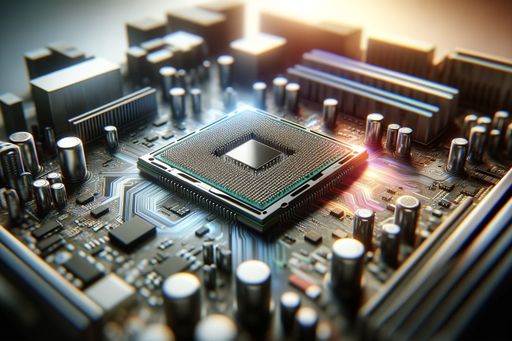Australia's Supercomputing Research Centre to Harness Quantum Computing with Nvidia Superchip Nodes
Australia's National Supercomputing and Quantum Computing Innovation Hub is set to revolutionize quantum computing with the deployment of Nvidia Grace Hopper Superchip nodes at the Pawsey Supercomputing Research Centre in Perth.

New Supercomputer to Push the Boundaries of Quantum Computing
Australia's National Supercomputing and Quantum Computing Innovation Hub is preparing to take quantum computing to new heights. Nvidia has announced that the Pawsey Supercomputing Research Centre in Perth will be equipped with eight Nvidia Grace Hopper Superchip nodes to power the open-source computing platform. This supercomputer is expected to offer up to 10 times higher processing performance compared to the current capabilities of the center.
The deployment at Pawsey will comprise of eight Grace Hopper Superchip nodes based on the Nvidia MGX modular architecture. These superchips feature an Arm-based Nvidia Grace CPU combined with an Nvidia H100 Tensor Core GPU in the same package, utilizing Nvidia NVLink-C2C chip interconnects in the MGX modular architecture. This unique design eliminates the need for a traditional CPU-to-GPU PCIe connection and provides a seven times greater bandwidth between the GPU and CPU compared to the latest PCIe technology. Researchers in Australia anticipate a ten-fold increase in application performance for processing large data sets measured in terabytes.
The CUDA Quantum platform, which powers this new supercomputer, offers a hybrid solution that integrates quantum and classical computing. It enables dynamic workflows across different system architectures, allowing researchers to integrate and program quantum processing units (QPUs), CPUs, and GPUs in one cohesive system. This GPU-accelerated platform provides scalability and high-performance capabilities.
Advancing Quantum Communication and Encrypted Networks
In addition to the developments at the Pawsey Supercomputing Research Centre in Australia, there have been successful quantum communication tests conducted by Russia and China. The test, spanning a distance of 3,800 kilometers via satellite, explored the potential for encrypted networks for BRICS countries. This achievement marks a significant milestone in the advancement of quantum communication technology.
The test conducted by Russia and China opens up possibilities for secure and encrypted communication networks. The BRICS countries (Brazil, Russia, India, China, and South Africa) could benefit from the implementation of secure quantum communication systems, ensuring confidential and tamper-proof data transmission.
This successful test signifies the ongoing progress and collaboration in the field of quantum communication. As countries continue to push the boundaries of quantum technology, the potential for secure and advanced encrypted networks becomes increasingly promising.
The Future of Quantum Computing
With the deployment of Nvidia Grace Hopper Superchip nodes in Australia, the capabilities of quantum computing are set to soar. This new supercomputer powered by Nvidia's technology will unlock immense processing power and pave the way for groundbreaking research and innovation.
The integration of quantum and classical computing through the CUDA Quantum platform further expands the possibilities for researchers. By combining quantum processing units, CPUs, and GPUs in a single system, researchers can tackle complex problems and explore new applications across various disciplines.
As advancements in quantum communication and computing continue to unfold, we can expect transformative developments in cybersecurity, scientific research, drug discovery, and more. The future of technology is being shaped by quantum computing, and the possibilities are limitless.



